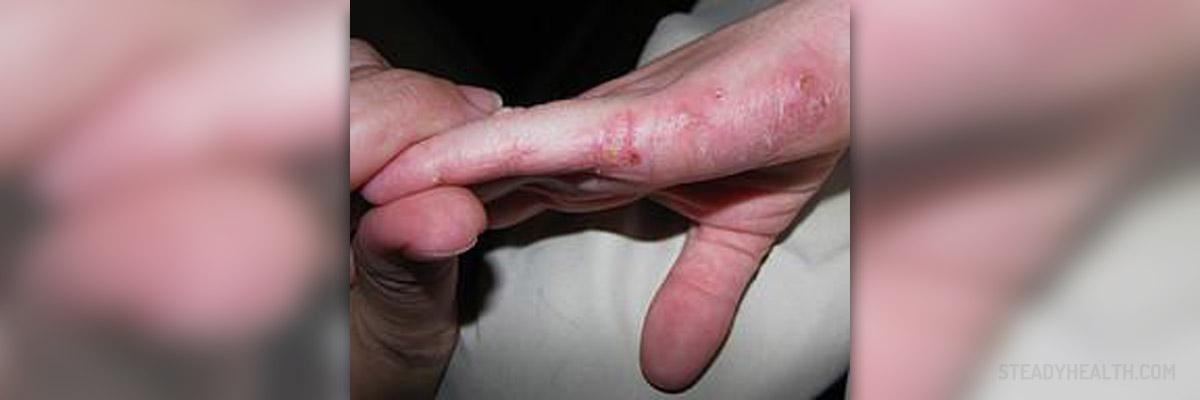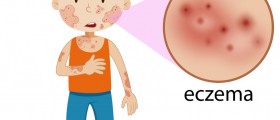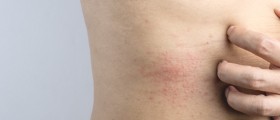
Contact dermatitis, as the name suggests, is skin inflammation induced by a direct contact with an irritating substance or an allergen. The condition develops in a form of different skin reactions. If one is already suffering from some allergy, he/she is at higher risk of developing contact dermatitis.
Abnormal skin reaction generally develops soon after the skin comes in contact with different irritants such as acids, alkaline materials, soaps, detergents, solvents etc.
It is estimated that contact dermatitis is actually the most commonly reported type of dermatitis.
Typical skin changes develop within 24-48 hours after the exposure. The skin may look as if it was burned, is red and may have open sores.
Allergens and Irritants Associated with Contact Dermatitis
People may develop contact dermatitis after exposure to certain plants (poison ivy, poison oak, poison sumac etc.), metals such as nickel, medications (antibiotics, topical anesthetics etc.), rubber or latex, different cosmetic products, fabrics and clothing, detergents, solvents, adhesives, fragrances, perfumes and many other substances.
Contact Dermatitis Symptoms and Clinical Findings
The affected skin is red, itchy and tender. There is also localized swelling, warmth of the affected area and sometimes additional skin lesions such as open sores. The rash is a mixture of papules, vesicles and bullae. These may ooze, drain and eventually crust. Finally, the skin becomes scaly, raw and rather thick.
Diagnosing Contact Dermatitis
It is quite easy to confirm contact dermatitis thanks to characteristic skin changes and a history of exposure to an irritant/allergen.
In order to identify allergens involved in abnormal skin reaction doctors perform patch testing. This testing is especially important for individuals with chronic or recurring condition. During the first visit, doctors places small patches containing potential allergen onto the patient's skin. These patches must remain on the skin for 48 hours. After they are removed doctors evaluate whether there is inflammation and what allergens have caused it.
Contact Dermatitis Treatment Options
Prior any treatment is initiated, one is supposed to thoroughly wash the exposed area and remove all traces of the irritant. Furthermore, the person must avoid further exposure.
Inflammation caused by contact dermatitis is generally treated with corticosteroid creams/ointments. Once prescribed with these medications, patients must strictly follow doctor's orders because such creams are highly potent and may cause some adverse effects. Patients with severe form of contact dermatitis require oral corticosteroids. The dose of oral corticosteroids is initially high, but it is gradually reduced.
Some patients are prescribed tacrolimus ointment or pimecrolimus cream, both containing very potent immunosuppressive agents.
Pruritus is brought under control with wet dressings and soothing anti-itch lotions.












-Causes,-Symptoms-And-Diagnosis_f_280x120.jpg)




Your thoughts on this
Loading...